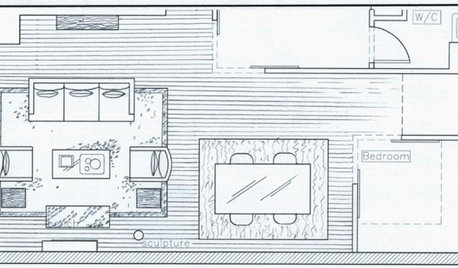when is it time to start over?
a_bear
14 years ago
Related Stories

DECORATING GUIDESHow to Decorate When You're Starting Out or Starting Over
No need to feel overwhelmed. Our step-by-step decorating guide can help you put together a home look you'll love
Full Story
GARDENING GUIDESGet a Head Start on Planning Your Garden Even if It’s Snowing
Reviewing what you grew last year now will pay off when it’s time to head outside
Full Story
GARDENING GUIDES10 Tips to Start a Garden — Can-Do Ideas for Beginners
Green up your landscape even if you're short on time, money and knowledge, with these manageable steps for first-time gardeners
Full Story
LIFEWhen a Household Divides — How to Reinvent Your Home Style
Consider starting over an opportunity to discover yourself anew. Here, some insight to help you create a freshly inspiring home
Full Story
HOUZZ TOURSHouzz Tour: Globetrotting Couple Make a New Start in California
When a job transfer brings a couple to the West Coast, they create a stylish home for their young family that reflects their love of travel
Full Story
MOST POPULARHow to Start a Cool-Season Vegetable Garden
Late summer and late winter are good times to plan and plant cool-season crops like salad greens, spinach, beets, carrots and peas
Full Story
HOUZZ TOURSMy Houzz: A Soothing Fresh Start in Dallas
See how a designer helped outfit a time-strapped family's new house in a contemporary, relaxed style
Full Story
DECORATING GUIDES9 Planning Musts Before You Start a Makeover
Don’t buy even a single chair without measuring and mapping, and you’ll be sitting pretty when your new room is done
Full Story
DESIGN PRACTICEDesign Practice: Start-up Costs for Architects and Designers
How much cash does it take to open a design company? When you use free tools and services, it’s less than you might think
Full Story
CONTRACTOR TIPSBuilding Permits: When a Permit Is Required and When It's Not
In this article, the first in a series exploring permit processes and requirements, learn why and when you might need one
Full StorySponsored






Kimmsr
a_bearOriginal Author
Related Professionals
Citrus Heights Landscape Architects & Landscape Designers · North New Hyde Park Landscape Architects & Landscape Designers · Sand Springs Landscape Architects & Landscape Designers · Vernon Hills Landscape Architects & Landscape Designers · Braintree Landscape Contractors · Cedar Hill Landscape Contractors · Maywood Landscape Contractors · Waldorf Landscape Contractors · Crowley Driveway Installation & Maintenance · Antelope Fence Contractors · Fountain Fence Contractors · Lauderhill Fence Contractors · Midvale Fence Contractors · Provo Fence Contractors · Sunrise Manor Fence ContractorsKimmsr
dchall_san_antonio
a_bearOriginal Author
john_in_sc
a_bearOriginal Author
Alph
Kimmsr
Alph
a_bearOriginal Author
dchall_san_antonio
a_bearOriginal Author
dchall_san_antonio
a_bearOriginal Author